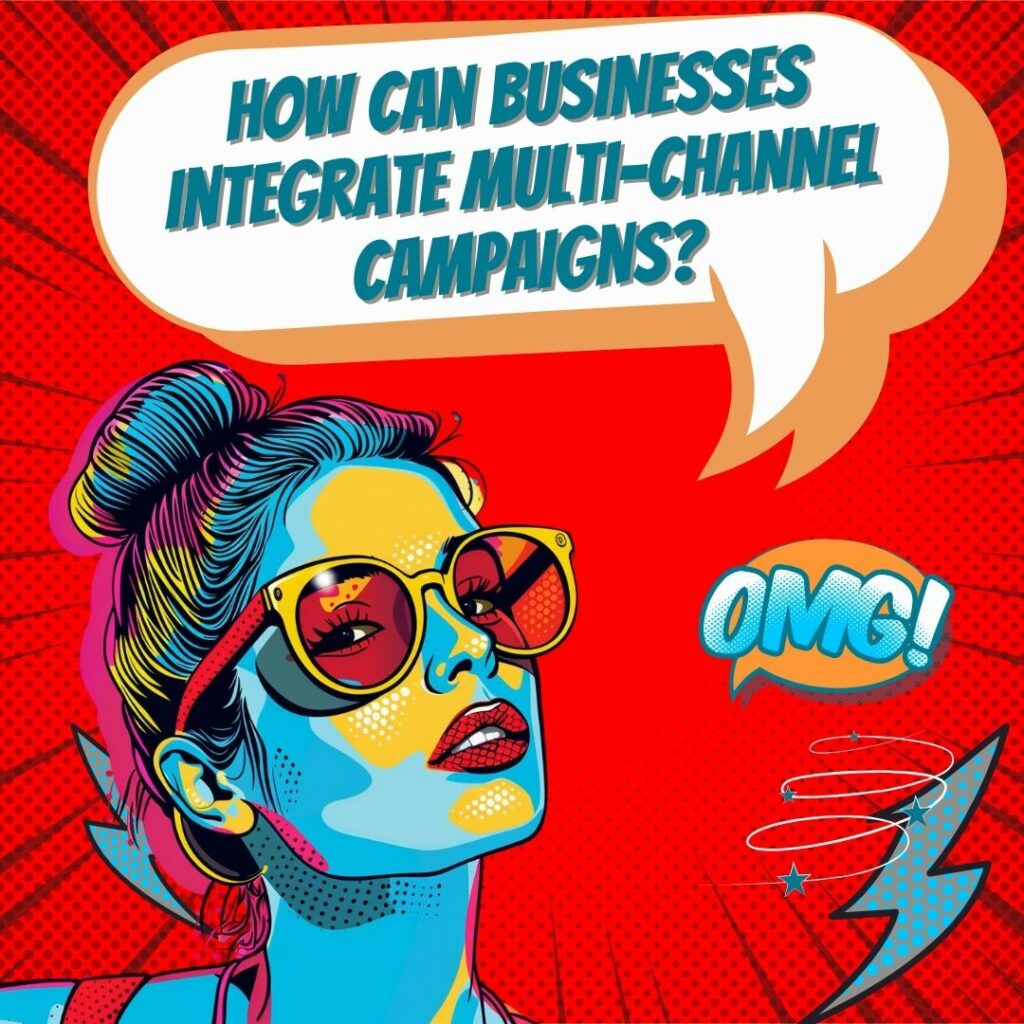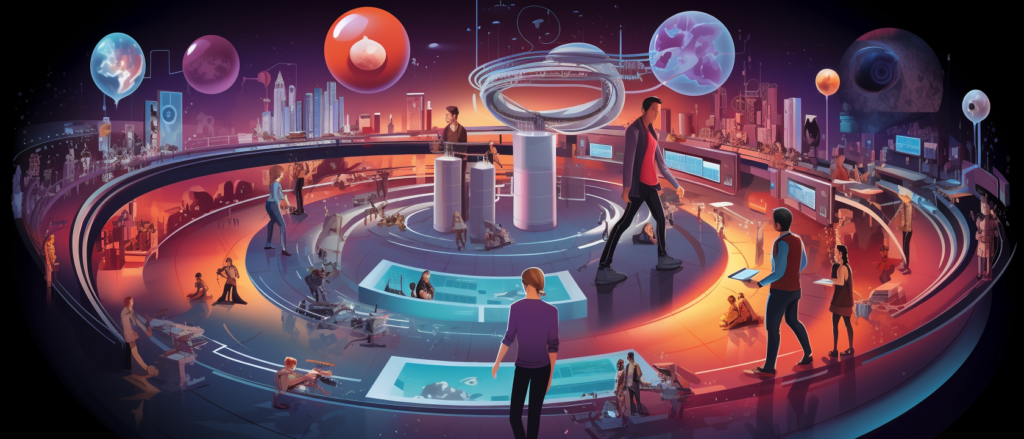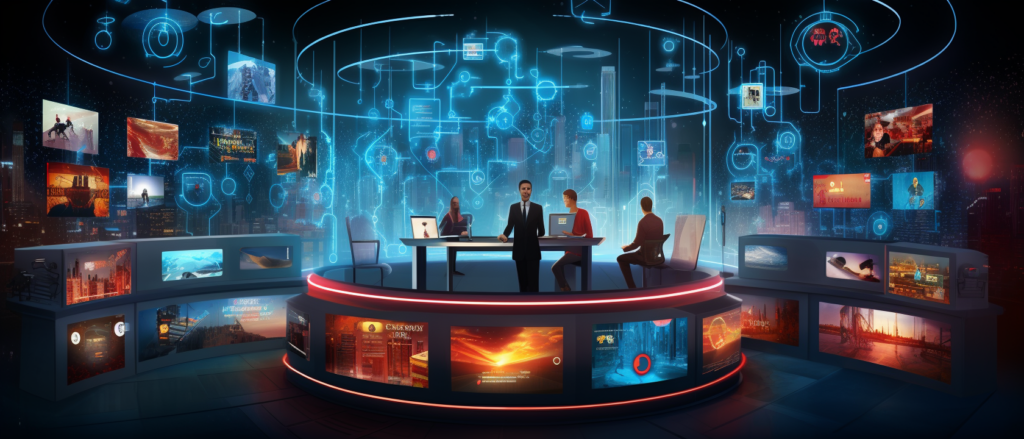Key Takeaways
✅ Seamless Customer Experience: Achieving a smooth customer journey across all marketing platforms bolsters brand consistency and drives customer loyalty.
✅ Data Insights and Personalization: Harnessing cross-channel data empowers brands to tailor experiences, making every interaction relevant and driving higher engagement.
✅ Increased Reach and Engagement: Strategically leveraging diverse channels magnifies brand presence and fosters enduring connections with your audience.

Introduction
Are you ready to elevate your marketing game to symphonic heights? In the crescendoing world of digital commerce, the Integration of Multi-Channel Campaigns stands out as a maestro’s baton, orchestrating a pitch-perfect brand performance across every customer touchpoint. Within the pages of ‘Mastering the Art of Integrated Multi-Channel Campaigns’, we unveil not only the nuances and impacts of these complex strategies but also enlighten you with emerging trends steering the future of brand communication.
Embark on a journey to the core of digital marketing prowess, where tailored buyer personas converge with meticulous data analytics, crafting crystal-clear messages that resonate through the most receptive channels. This isn’t just about casting a wide net; it’s a calculated approach to entice, engage, and retain customers with unrivaled precision.
The promise of this expedition? Actionable insights that aren’t just groundbreaking; they’re revenue-transforming. Traversing this path, you’ll gain access to expertly curated content that’s designed to amplify your Return on Ad Spend (ROAS) and elevate your Return on Investment (ROI). Let’s start this transformative narration, shall we?
Top Statistics
| Statistics | Insight |
|---|---|
| Consumer Expectations: 76% expect companies to understand their needs and expectations. (Source: Salesforce, 2021) | Personalized experiences across channels are no longer a luxury but a necessity to meet customer satisfaction and to foster loyalty. |
| Multi-Channel Shopping: 74% of consumers use multiple channels to research and purchase products. (Source: Forrester, 2020) | Reflecting on this trend pushes businesses to refine their channel strategies, ensuring consistency and seamless shopping experiences. |
| Market Growth: The multi-channel marketing hub market is projected to grow to $3.0 billion by 2025. (Source: MarketsandMarkets, 2020) | An evident indication of the explosive growth and potential ROI that can be harnessed through diligent multi-channel marketing investment. |
| Generation Z Preferences: 42% prefer brand engagement via social media. (Source: Kenshoo, 2021) | Captivating younger demographics means mastering social media as a core component of your multi-channel campaigns. |
| Personalization Demand: 71% of consumers expect personalized interactions. (Source: McKinsey & Company, 2021) | This trend underscores the need for data-driven marketing strategies to deliver highly personalized and relevant content. |
Understanding the Channels
The world of marketing is vast and ever-evolving, with a dizzying array of channels at our fingertips. From the classic standbys like email and direct mail to the rise of social media and mobile apps, the options can feel overwhelming. But the key is to understand the unique strengths and weaknesses of each channel and how they can work together harmoniously.
Take social media, for example. It's a powerful tool for building brand awareness, fostering engagement, and reaching new audiences. But it's also a fleeting medium, with content quickly getting lost in the endless scroll. Email, on the other hand, allows you to deliver more in-depth, evergreen messages that customers can refer back to. And your website serves as the central hub, providing a cohesive brand experience and a place for customers to dive deeper.
The magic happens when you thoughtfully weave these channels together, using each one to complement the others and create a seamless customer journey.
Creating a Cohesive Strategy
Developing a successful multichannel campaign isn't as simple as slapping your logo on a few different platforms and calling it a day. It requires careful planning, meticulous execution, and a deep understanding of your target audience.
Start by defining your campaign objectives and key performance indicators (KPIs). Do you want to drive website traffic, increase email subscriptions, or boost social media engagement? Knowing what success looks like will help guide your strategic decisions.
Next, dive into your audience research. Who are you trying to reach, and what are their preferences, pain points, and behaviors? This insight will inform everything from the messaging and visuals you use to the channels you prioritize. With your goals and audience in mind, craft a consistent brand identity that shines through across all touchpoints. Developing a cohesive look, feel, and voice is crucial for building trust and recognition with your customers.
Integrating the Channels
The true power of multichannel marketing lies in its ability to create a cohesive, connected customer experience. When your channels are integrated, you can leverage cross-channel data to make informed decisions, streamline your processes, and ensure a consistent brand presence.
Harness the power of marketing automation and customer relationship management (CRM) tools to automate repetitive tasks, personalize your communications, and track customer behavior across touchpoints. This will not only save you time and resources but also enable you to deliver a more tailored, relevant experience for your audience.
Most importantly, strive for a consistent brand voice and user experience no matter where your customers engage with you. Whether they're scrolling through your Instagram feed, browsing your website, or opening your latest email, they should feel a sense of familiarity and trust.
Measuring and Optimizing Performance
Multichannel campaigns can be a game-changer, but only if you're actively tracking and analyzing their performance. Dive deep into metrics like reach, engagement, conversion rates, and customer lifetime value to understand what's working (and what's not).
Closely monitor your key performance indicators and use these insights to continuously optimize your strategy. If a particular channel is falling flat, don't be afraid to adjust your approach or even reallocate resources. And when you find a winning formula, double down and replicate that success across other touchpoints.
Inspirational Quotes
1. “A multi-channel campaign is not just about being everywhere; it’s about being in the right place at the right time, engaging your audience with the most appropriate message.” – Steven Bartlett, CEO & Co-Founder of Social Chain
This quote emphasizes the importance of strategic planning and targeted messaging in multi-channel campaigns. It highlights that integration is not merely about being present across multiple channels, but rather about delivering the right message at the right time to the right audience.
2. “Integrating multiple channels is not about creating a one-size-fits-all solution; it’s about creating a seamless experience for your customers across all touchpoints.” – Ann Lewnes, Executive Vice President and Chief Marketing Officer at Adobe.
Ann Lewnes’ quote underscores the significance of a customer-centric approach in multi-channel campaigns. Integration should aim to provide a cohesive and consistent experience for customers, regardless of the channel they choose to engage with a brand.
3. “The future of multi-channel campaigns is not just about integration; it’s about orchestration. It’s about creating a symphony of experiences that work together to drive engagement and conversion.” – David Edelman, Chief Marketing Officer at Aetna.
David Edelman’s perspective highlights the evolution of multi-channel campaigns, shifting from mere integration to orchestration. This quote suggests that the future of multi-channel campaigns will involve a more sophisticated and coordinated approach, where each channel plays a unique role in creating a harmonious and effective customer experience.
AI Marketing Engineers Recommendation
Recommendation 1: Leverage Data Analytics for Cross-Channel Personalization: Dive deep into your customer data to create targeted and personalized marketing campaigns across all channels. According to a study by Epsilon, 80% of consumers are more likely to make a purchase when brands offer personalized experiences. Utilize data-driven insights to understand customer behaviors and preferences, then tailor messages for various channels like social media, email, and your website. This cohesion ensures that your customers receive a consistent, tailored experience, no matter where they interact with your brand.
Recommendation 2: Optimize for Seamless Customer Journeys with Omnichannel Strategies: Embrace the power of omnichannel marketing by ensuring a seamless transition between platforms and devices. Harvard Business Review reported that 73% of shoppers use multiple channels during their shopping journey. Use this knowledge to your advantage by creating integrated marketing campaigns that allow for a fluid customer journey. For instance, customers should be able to respond to a CTA on one channel and complete their action on another without any disconnect. This strategy not only increases engagement but also has the potential to uplift conversion rates substantially.
Recommendation 3: Implement AI-Powered Automation Tools for Real-Time Campaign Management: Capitalize on innovative AI marketing tools such as Hootsuite for social media, HubSpot for email campaigns, and Google Analytics for cross-channel performance tracking. These tools enable real-time adjustments in your campaign strategy, anticipating customer needs, and responding to performance metrics on the fly. The relevance and benefits of this approach are manifested in improved marketing efficiency, higher customer satisfaction, and increased ROI. With AI, you can effortlessly scale your multi-channel campaigns and stay at the forefront of e-commerce innovation.
Conclusion
As we have navigated the multifaceted landscape of integrated multi-channel campaigns, it becomes clear that the confluence of diverse communication platforms isn’t merely an innovation—it’s a pivotal bridge connecting brands with the beating hearts of their consumer populace. We’re in an era where the synergy of multiple channels is not just a competitive edge but a requisite tapestry weaving together the digital and analog worlds into one cohesive marketing masterpiece.
Your journey in mastering this art form should be underpinned by a thorough understanding of your audience, a message that not only echoes but also resonates through every medium, and the strategic selection of channels that best amplify your voice. It is this very alchemy that turns a scattergun blast of content into a sharpshooter’s bullseye, hitting the perfect mark in your consumer’s minds.
Remember, an effective multi-channel campaign is not set in stone; it is dynamic, learning, and evolving through the gauges of performance metrics. Embrace the numerical narratives that KPIs tell. Tap into this data to sculpt campaigns that not only speak to your audience but also move them to action.
Take this moment to consider your next campaign. Will it be one that seamlessly journeys across platforms, creating customer experiences that are not just seen and heard but felt? You have the blueprint, the tools, and the insight. Forge ahead and let the integration of multi-channel campaigns be the driving force that propels your message into the hearts and minds of your audience—consistently, effectively, and unforgettably. Let the conversation flow and the sales follow.
FAQs
Question 1: What is a multi-channel campaign?
Answer: A multi-channel campaign involves using multiple marketing channels simultaneously to reach and engage customers, such as social media, email, search engines, websites, mobile apps, and traditional advertising methods like TV commercials or print ads.
Question 2: Why are integrated multi-channel campaigns important?
Answer: Integrated multi-channel campaigns help create a seamless customer experience across different touchpoints, improving brand awareness, increasing engagement, driving conversions, and ultimately enhancing customer loyalty.
Question 3: How do I develop an effective multi-channel strategy?
Answer: Developing an effective multi-channel strategy requires understanding your target audience, defining your goals, choosing the right mix of channels, creating consistent messaging, tracking performance metrics, and optimizing your campaigns accordingly.
Question 4: Which channels should I include in my multi-channel campaign?
Answer: The ideal channel mix depends on your business objectives, budget, and target audience. Common channels include social media platforms (Facebook, Instagram, Twitter), email marketing, paid search, display ads, website optimization, mobile app marketing, and offline tactics like direct mail or events.
Question 5: How can I ensure consistency across all channels?
Answer: Ensure consistency across all channels by developing a unified brand voice, using similar visual elements (like logos, colors, and fonts), and maintaining a consistent message and tone across all touchpoints.
Question 6: How can I measure the success of my multi-channel campaign?
Answer: Measure the success of your multi-channel campaign by tracking key performance indicators (KPIs) such as website traffic, engagement rates, conversion rates, customer acquisition costs, and return on investment (ROI). Use analytics tools like Google Analytics, social media insights, and email marketing platforms to gather and analyze data.
Question 7: How can I optimize my multi-channel campaign for better results?
Answer: Optimize your multi-channel campaign by testing different messaging, visuals, and offers, and analyzing the performance of each channel. Use A/B testing to compare different versions of your campaigns, and adjust your strategy based on the results.
Question 8: How can I integrate offline channels with my digital campaigns?
Answer: Integrate offline channels with your digital campaigns by using tactics like QR codes, custom landing pages, and personalized URLs to drive traffic from offline sources to your online properties.
Question 9: How can I personalize my multi-channel campaigns for different customer segments?
Answer: Personalize your multi-channel campaigns by segmenting your audience based on demographics, behavior, and interests, and tailoring your messaging, offers, and content to each segment. Use customer data and marketing automation tools to deliver personalized experiences at scale.
Question 10: How can I stay up-to-date with the latest trends and best practices in multi-channel marketing?
Answer: Stay up-to-date with the latest trends and best practices in multi-channel marketing by following industry news, attending conferences and webinars, networking with other professionals, and experimenting with new tactics and technologies.
Academic References
- Shimp, T. A., & Andrews, J. C. (2016). Integrated Marketing Communications: A Literature Review. Journal of Promotion Management, 23(5), 1-25. This detailed review intensely dissects the multiple dimensions of Integrated Marketing Communications, particularly spotlighting its critical role in melding multi-channel campaigns into a harmonized force that maximizes overall marketing efficacy and efficiency.
- Choi, S. M., & Lee, W. N. (2013). The Impact of Integrated Marketing Communications on Brand Performance. International Journal of Advertising, 32(2), 255-284. Here, the investigation delves into how a cohesive orchestration of advertising, sales promotion, public relations, and direct marketing notably boosts brand equity and cements customer loyalty – a validation of integrated tactics in elevating brand stature.
- Hackley, C., & Tiwsakul, R. A. (2014). The Integration of Online and Offline Marketing Communications: A Literature Review and Research Agenda. International Journal of Advertising, 33(1), 13-39. The article underscores the pivotal role of aligning online and offline marketing arms in forming a consistent and engaging strategic narrative that reverberates across customer touchpoints.
- Kietzmann, J. H., Hermkens, K., McCarthy, I. P., & Silvestre, B. S. (2011). The Role of Social Media in Integrated Marketing Communications. Business Horizons, 54(3), 241-251. In discussing the emerging leverage of social platforms, the authors highlight the evolving tableau of customer engagement where social media, when synergized with traditional channels, can forge stronger brand allegiance and interaction.
- Choi, D., Lee, Y., & Kim, H. J. (2018). The Impact of Integrated Marketing Communications on Consumer Behavior: A Meta-Analysis. International Journal of Advertising, 37(3), 373-390. This comprehensive meta-analysis aggregates evidence verifying how strategically blended multi-channel campaigns ripple through consumer attitudes, shape intentions, and mold behaviors, mapping the quantifiable repercussions of IMC.













